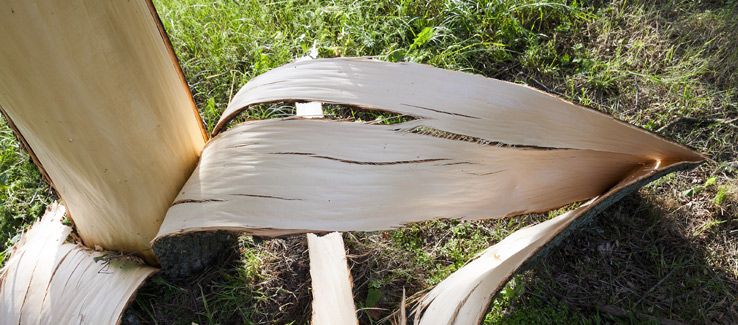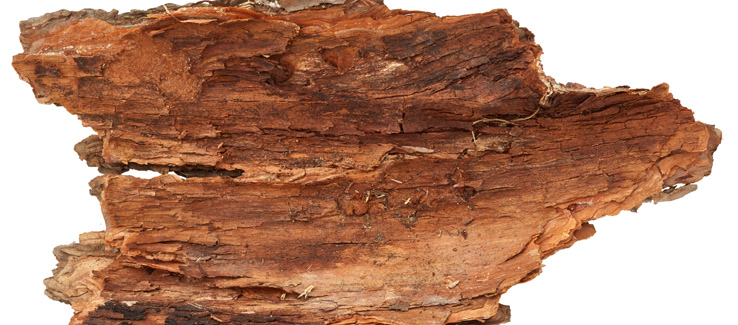 Tree damage can occur as a result of a number of things. At Fast we have seen all scenarios ranging from a reckless driver crashing into a tree, reckless lawn care providers, animals or deer scraping its antlers, or extreme weather damaging tree bark. A damaged tree though isn’t just an unpleasant sight. If it remains as it is without any treatment, the damage can result in infection and lead to its death.
Tree damage can occur as a result of a number of things. At Fast we have seen all scenarios ranging from a reckless driver crashing into a tree, reckless lawn care providers, animals or deer scraping its antlers, or extreme weather damaging tree bark. A damaged tree though isn’t just an unpleasant sight. If it remains as it is without any treatment, the damage can result in infection and lead to its death.
Note: Lightning strikes will also lead to tree bark damage. This case however, needs more specific treatment.
What Bark Does For a Tree
Bark functions as the “epidermis” (skin) of the tree. This protective external tissue is necessary for thwarting insects and infections from entering the tree. When this “skin” gets intruded and damaged, it leaves the tree exposed to disease and infections; further, this activity loosens the trunk’s integrity and is generally deteriorating to its health.

Tree bark also protects the wall of the skin named “Phloem”, which belongs to the tree’s circulatory function and is vital for the tree’s health. Phloem is fortified with sugars and nutrients synthesized during the photosynthesis phase and spread throughout the plant. In case the bark gets injured or removed, the circulation of nutrients gets blocked and the ruined part of it starts to dry off, exposing it to health and infection issues.
How Much Bark Can a Tree Lose
In case the tree bark injury penetrates 25% or less the tree’s surrounding tissue, the tree’s health will often be ok, and it will remain unaffected unless the injury isn’t treated.
When the tree damage percentage reaches anywhere from 25-50%, the tree will be affected but often not substantial enough to threaten its survival. The signs of damage will show up as dead branches or fallen leaves. Injuries of this level, however, need to be tackled promptly and thoroughly before they spread.
In case the tree injury is over 50%, there will be a serious threat to its survival. It’s best to hire a tree care expert to assist you in treating the damage.

Finally, in a case where tree bark is damaged completely around its circumference, this is also known as “girdling”. It would be very hard at this point to restore the damage as the tree will most probably not survive. As last resort, a tree care expert may attempt a grafting repair technique to seal the gap of the bark and prolong the tree’s life so it can attempt to heal itself.
How to Treat Bark Damage and Loss
Whenever a damage/wound appears, fungi that lead to decay can penetrate the heartwood. The wood surrounding the damage will release substances that will create a protective layer to separate and isolate the injured part. This protective process is known as “compartmentalization”.
In many cases, if caught in time, the bark can be reattached to the tree using tree bark repair tape or other methods used by tree professionals.
In a lively tree, the growth cycle endures, and once compartmentalization occurs, deformity and decay will not escalate. Clearing up decayed or infected wood from cavities isn’t suggested, as the soundness of the compartmentalized layer may be violated, leaving the wound exposed to further decay.
Tree Health and Bark Integrity
For all plants in your yard, it is important that you perform checks and inspections regularly. Proper inspections will make sure that your tree is in a healthy state and you can promptly take care of any possible damages before they spread.
Disease prevention is ideal, click here for more tips on that, but in cases where bark and tree damage is out of your control, address the damages immediately.
Our tree service team can give you a helping hand to keep a thriving ecosystem and make sure that any potential tree damages are treated properly and effectively.
https://plus.google.com/+Fasttreeremovalatlantaservices(404) 220-9965
To view the orignal version of this post, visit: http://www.fasttreeremovalatlanta.com/handling-tree-bark-damage
